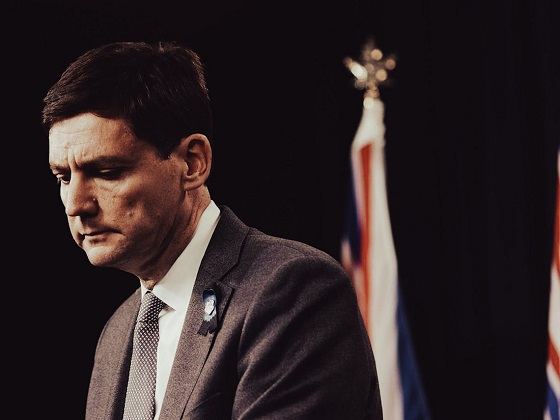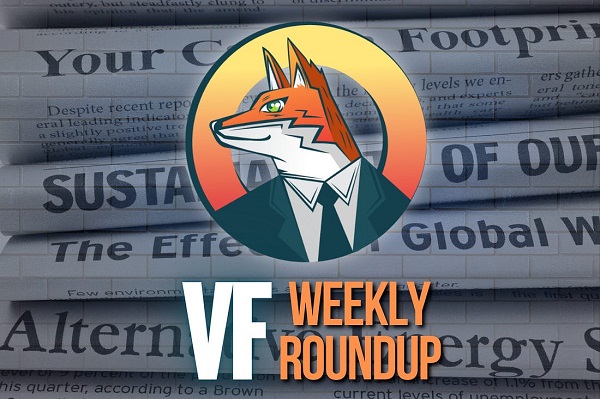Alberta
Province planning “Heroes Fund” to help families of first responders who die on duty

From the Province of Alberta
Supporting Alberta’s heroes and their families
Creating the Alberta’s Heroes Fund will improve benefits for the families of fallen first responders and recognize their noble service.
Bill 47, Ensuring Safety and Cutting Red Tape, will allow Alberta’s government to follow through on its commitment to create the Heroes Fund. Alberta’s government will honour the sacrifices of first responders who die as a result of performing their duties. The Heroes Fund will provide a one-time tax-free payment of $100,000 to eligible families through the Workers’ Compensation Board.
“There is no higher form of public service than to risk one’s life to maintain public safety. While nothing can replace a loved one, the Heroes Fund will provide families with extra support and improved benefits while honouring the brave and valiant service of Alberta’s fallen heroes.”
“First responders commit their lives to serving their communities and we must honour their heroic work and ensure their loved ones have the support they need. Our government committed to ensuring families of Alberta’s fallen heroes are supported, and while I wish this fund wasn’t needed, today we are delivering on our promise to honour them and the sacrifices they’ve made.”
Eligible first responders include firefighters, police officers, paramedics, sheriffs and provincial corrections officers. Alberta’s Workers’ Compensation Board (WCB) will administer the Heroes Fund and will begin identifying eligible families and administering payments, which are retroactive to April 1, 2020.
“Day in and day out, our members put their health and safety on the line to help Albertans often during the most difficult times in their lives. First responders understand that this is our calling, this is what we do. We acknowledge the inherent risk of our profession and do what we can to mitigate risk. Unfortunately, risk cannot always be mitigated, and every year we see firefighters, paramedics and dispatchers who are killed from job-related injuries, occupational disease, or mental health struggles. The Alberta Fire Fighters Association would like to take this opportunity to applaud the Government of Alberta for the Heroes Fund. While this fund will never replace the void from the loss of a loved one, it will help ease the inevitable financial hardships caused by those who have paid the ultimate sacrifice.”
“First responders are charged with the significant responsibility of upholding safety in our communities and protecting citizens, often placing their lives in danger. Losing a loved one in the line of duty is a tragedy many of us are lucky to be unfamiliar with, but for those who must live with that grief and its many hardships, this fund provides much-needed support and commemoration of heroes that made the ultimate sacrifice.”
“As a former sergeant with the Calgary Police Service, I was honoured to serve with many brave police officers, firefighters, and paramedics in the City of Calgary. I know first-hand how our first responders put their lives on the line every day in the service of Albertans and I am proud that our government is fulfilling our commitment to create a Heroes Fund. Our government is taking concrete action to give the families of our fallen heroes the help they need in difficult times.”
“I’m proud to be part of a government that delivers on its promises and stands up for first responders and their families. As a former paramedic firefighter, I understand the sacrifices first responders make to serve their communities and answer the call to service. I wish everyone could return home safely at the end of the day, but for those who pay the ultimate price serving their communities, the creation of this fund will make a difference in the lives of family members when they need it most. Establishing this fund will make Alberta the only province with a program of this type to honour and pay tribute to the families of first responders.”
Quick facts
- Budget 2020 commits $1.5 million per year for the Heroes Fund for three years, starting in the 2020-21 fiscal year.
- Alberta is the only province with a program of this type for families of fallen first responders.
- Heroes Fund payments are separate from regular workers’ compensation fatality benefits.
- The Heroes Fund will take effect when Bill 47 receives royal assent.
- There were 106 Alberta first responder fatalities between 2010 and 2019.
- 90 per cent of these were firefighters due to occupational illness.
- Albertans are served by:
- More than 14,000 full-time, part-time, casual and volunteer firefighters. About 80 per cent are volunteers.
- More than 7,500 police officers.
- More than 9,400 paramedics.
Alberta
Big win for Alberta and Canada: Statement from Premier Smith

Premier Danielle Smith issued the following statement on the April 2, 2025 U.S. tariff announcement:
“Today was an important win for Canada and Alberta, as it appears the United States has decided to uphold the majority of the free trade agreement (CUSMA) between our two nations. It also appears this will continue to be the case until after the Canadian federal election has concluded and the newly elected Canadian government is able to renegotiate CUSMA with the U.S. administration.
“This is precisely what I have been advocating for from the U.S. administration for months.
“It means that the majority of goods sold into the United States from Canada will have no tariffs applied to them, including zero per cent tariffs on energy, minerals, agricultural products, uranium, seafood, potash and host of other Canadian goods.
“There is still work to be done, of course. Unfortunately, tariffs previously announced by the United States on Canadian automobiles, steel and aluminum have not been removed. The efforts of premiers and the federal government should therefore shift towards removing or significantly reducing these remaining tariffs as we go forward and ensuring affected workers across Canada are generously supported until the situation is resolved.
“I again call on all involved in our national advocacy efforts to focus on diplomacy and persuasion while avoiding unnecessary escalation. Clearly, this strategy has been the most effective to this point.
“As it appears the worst of this tariff dispute is behind us (though there is still work to be done), it is my sincere hope that we, as Canadians, can abandon the disastrous policies that have made Canada vulnerable to and overly dependent on the United States, fast-track national resource corridors, get out of the way of provincial resource development and turn our country into an independent economic juggernaut and energy superpower.”
Alberta
Energy sector will fuel Alberta economy and Canada’s exports for many years to come

From the Fraser Institute
By any measure, Alberta is an energy powerhouse—within Canada, but also on a global scale. In 2023, it produced 85 per cent of Canada’s oil and three-fifths of the country’s natural gas. Most of Canada’s oil reserves are in Alberta, along with a majority of natural gas reserves. Alberta is the beating heart of the Canadian energy economy. And energy, in turn, accounts for one-quarter of Canada’s international exports.
Consider some key facts about the province’s energy landscape, as noted in the Alberta Energy Regulator’s (AER) 2023 annual report. Oil and natural gas production continued to rise (on a volume basis) in 2023, on the heels of steady increases over the preceding half decade. However, the dollar value of Alberta’s oil and gas production fell in 2023, as the surging prices recorded in 2022 following Russia’s invasion of Ukraine retreated. Capital spending in the province’s energy sector reached $30 billion in 2023, making it the leading driver of private-sector investment. And completion of the Trans Mountain pipeline expansion project has opened new offshore export avenues for Canada’s oil industry and should boost Alberta’s energy production and exports going forward.
In a world striving to address climate change, Alberta’s hydrocarbon-heavy energy sector faces challenges. At some point, the world may start to consume less oil and, later, less natural gas (in absolute terms). But such “peak” consumption hasn’t arrived yet, nor does it appear imminent. While the demand for certain refined petroleum products is trending down in some advanced economies, particularly in Europe, we should take a broader global perspective when assessing energy demand and supply trends.
Looking at the worldwide picture, Goldman Sachs’ 2024 global energy forecast predicts that “oil usage will increase through 2034” thanks to strong demand in emerging markets and growing production of petrochemicals that depend on oil as the principal feedstock. Global demand for natural gas (including LNG) will also continue to increase, particularly since natural gas is the least carbon-intensive fossil fuel and more of it is being traded in the form of liquefied natural gas (LNG).
Against this backdrop, there are reasons to be optimistic about the prospects for Alberta’s energy sector, particularly if the federal government dials back some of the economically destructive energy and climate policies adopted by the last government. According to the AER’s “base case” forecast, overall energy output will expand over the next 10 years. Oilsands output is projected to grow modestly; natural gas production will also rise, in part due to greater demand for Alberta’s upstream gas from LNG operators in British Columbia.
The AER’s forecast also points to a positive trajectory for capital spending across the province’s energy sector. The agency sees annual investment rising from almost $30 billion to $40 billion by 2033. Most of this takes place in the oil and gas industry, but “emerging” energy resources and projects aimed at climate mitigation are expected to represent a bigger slice of energy-related capital spending going forward.
Like many other oil and gas producing jurisdictions, Alberta must navigate the bumpy journey to a lower-carbon future. But the world is set to remain dependent on fossil fuels for decades to come. This suggests the energy sector will continue to underpin not only the Alberta economy but also Canada’s export portfolio for the foreseeable future.
-

 Business2 days ago
Business2 days agoCalifornia planning to double film tax credits amid industry decline
-

 Courageous Discourse1 day ago
Courageous Discourse1 day agoEurope Had 127,350 Cases of Measles in 2024
-

 2025 Federal Election1 day ago
2025 Federal Election1 day agoHighly touted policies the Liberal government didn’t actually implement
-

 Catherine Herridge2 days ago
Catherine Herridge2 days agoFBI imposed Hunter Biden laptop ‘gag order’ after employee accidentally confirmed authenticity: report
-

 2025 Federal Election20 hours ago
2025 Federal Election20 hours agoPoilievre promises to drop ‘radical political ideologies’ in universities
-

 Business1 day ago
Business1 day agoB.C. Credit Downgrade Signals Deepening Fiscal Trouble
-

 Energy12 hours ago
Energy12 hours agoTrump Takes More Action To Get Government Out Of LNG’s Way
-

 Crime1 day ago
Crime1 day agoEuropol takes out one of the largest pedophile networks in the world with almost 2 million users








